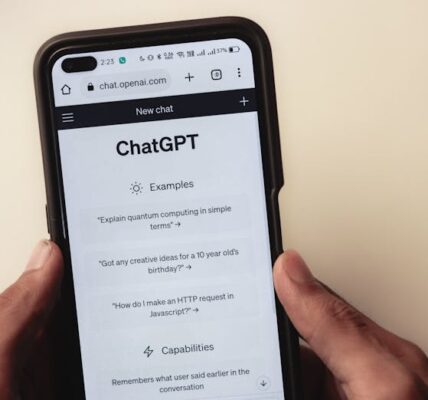Scale AI Prompt Engineer: A Comprehensive Guide
If you’re aiming to become a proficient scale AI prompt engineer, it’s essential to grasp the role’s intricacies and best practices. This field is a critical component of AI development, ensuring that artificial intelligence systems interpret and respond to prompts effectively.
Understanding the Role of a Scale AI Prompt Engineer
The job of a scale AI prompt engineer is multifaceted, involving the creation of prompt designs that facilitate machine learning models’ understanding and generating human-like responses. This process demands a deep knowledge of both the AI’s subject matter and the nuances of natural language.
Key Responsibilities and Skills
A prompt engineer must exhibit a blend of technical and linguistic skills. The core responsibilities include designing prompts that align with the AI’s objectives, testing and refining these prompts, and analyzing the outcomes for continual improvement. Technical acumen, particularly in machine learning and natural language processing, is a cornerstone of this role.
Best Practices for Effective Prompt Design
Clarity and Context: Prompts should be clear and provide enough context to guide the AI’s response. Ambiguity can lead to confusion and inaccurate results.
Consistency: Maintaining a consistent approach in prompt design helps in training the AI to recognize patterns and respond appropriately.
Testing: Rigorous testing is crucial. A prompt engineer should test multiple variations to identify which prompts yield the most accurate responses.
Strategies for Scaling AI Prompt Engineering
Scaling prompt engineering involves standardizing processes and employing strategies to handle larger volumes of work. Automation tools and collaborative software can significantly enhance productivity and consistency.
Automation in Prompt Engineering
Automation plays a pivotal role in scaling the efforts of prompt engineers. By automating the generation and testing of prompts, engineers can focus on complex tasks that require a more nuanced approach.
Collaboration Across Teams
Collaboration with data scientists, linguists, and subject matter experts ensures that prompts are both technically sound and contextually relevant. A multidisciplinary approach often leads to more robust AI systems.
Challenges in Scale AI Prompt Engineering
Prompt engineering at scale is not without its challenges. As the volume of prompts increases, maintaining quality and consistency becomes more difficult. Additionally, the AI’s responses must be monitored to prevent biases or errors from scaling as well.
Ensuring Quality at Scale
Quality assurance is vital in prompt engineering. This includes setting up robust review processes and employing metrics to assess the effectiveness of prompts.
Addressing Bias and Ethical Considerations
Bias in AI is a significant concern. Prompt engineers must be vigilant in designing prompts that do not perpetuate stereotypes or introduce unfair biases.
The Future of Scale AI Prompt Engineering
The field of prompt engineering is rapidly advancing, with new techniques and tools being developed to enhance the scale and efficiency of prompt design. Staying abreast of these advancements is critical for any aspiring prompt engineer.
Emerging Tools and Technologies
Emerging technologies, such as generative adversarial networks (GANs), are providing new ways to test and refine prompts. Additionally, advancements in AI interpretability are helping engineers understand how AI systems arrive at their responses.
Continued Learning and Adaptation
Continuous learning is a hallmark of successful prompt engineers. As AI systems grow more sophisticated, the strategies and techniques employed in prompt engineering must evolve accordingly.






